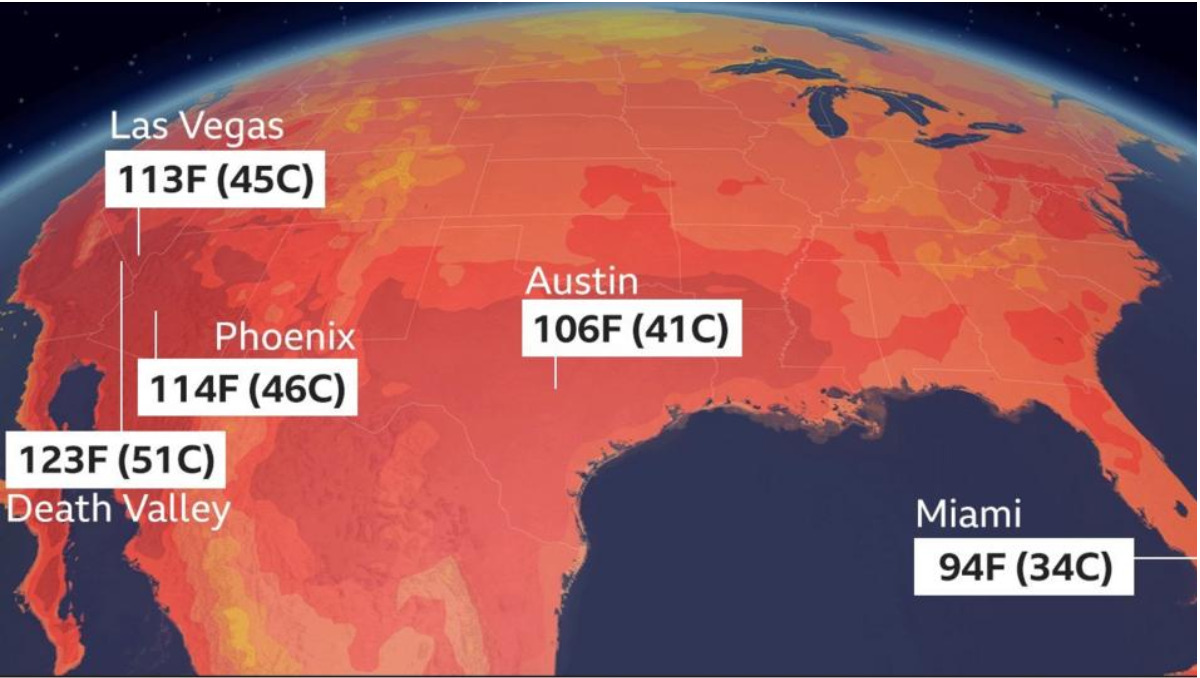With climate change stoking record heat waves across the globe, questions have been raised over the safety of players when the US hosts the FIFA World Cup in 2026.
Table of Contents
“One player is going to die”
As the climate change situation has been growing dire in recent years, the world has been witness to a summer of record-breaking temperatures, devastating wildfires and an ever-worsening air pollution situation, particularly in the US. This year, only 4% of the 318 million-strong US population were living in areas where an extreme heat alert was not declared, with 175 cities housing more than 111 million people experiencing at least a week of extreme heat, and 45 cities sweltering under harsh conditions for the majority of the summer.
These warnings are in accordance with the US government’s Heat Index, which takes into account both temperature and humidity. According to the Index, ‘extreme caution’ must be maintained if sporting activities are to happen at the 32C mark, with readings of 39C being labelled as ‘danger’.
It has barely been a week since Daniil Medvedev edged past Andrey Rublev at the US Open in New York, gravely commenting that the sweltering conditions are enough to kill a player. A week before that, races at the World Athletics Championships in Budapest were postponed due to the heat posing serious threats over the safety of the participants. FIFA themselves had to move the 2022 Qatar World Cup to the winter months of November and December, the very first time that the quadrennial tournament wasn’t played in the summer. Experts can only wonder how FIFA are going to combat with tougher conditions caused by climate change in the US.
How climate change has battered the US
These facts, which only form the tip of an iceberg, have been a cause of concern amongst sports scientists and whether matches can be carried out safely during the 2026 FIFA World Cup, to be hosted jointly by Canada, USA, and Mexico. The expansion of the World Cup—48 teams (previously 32 since 1998), 104 matches across a span of six weeks—only throws another spanner in the works.
Some 372 miles from Los Angeles, a host city, is Phoenix in Arizona, which recorded an all-time high temperature of 48C on 15th July, amidst a 19 day period when the mercury was stuck at the 43C mark. Texas, which includes the host cities of Dallas and Houston, saw temperatures soaring above 38C for 27 days in a row, prompting businesses, parks and other public facilities to shut their doors.

Miami will be hosting World Cup matches at the Hard Rock Stadium, but the city’s proximity to the ocean has provided little respite to its citizens, who suffered from temperatures of 38C and higher for more than a month during the summer. Climate change’s wrath hasn’t been limited to American borders, with wildfires raging across Canada and burning nearly 37.5 million acres of land.
The resultant air pollution has affected nearly 100 million Canadians, while also spreading to Vancouver, Toronto, Boston, Seattle, Philadelphia and New York—all host cities for the 2026 World Cup. 18 US states sounded the alarm as air-quality took a nosedive, with outdoor and even indoor sporting activities cancelled.
Mike Tipton, a professor at the University of Portsmouth who has worked with athletes in order to study the impacts of extreme conditions on the human body, believed that the event should be moved to a different time. Given the weather conditions seen this year, concerns are not only limited to players, but to officials and fans as well, while tactics would require a change to offset the diminished physical capabilities under the imposing sun, he told BBC Sport.
Past instances of climate change impacting sports
While decades-old temperature records are being broken, courtesy of climate change, this situation is far from novel. Similar problems arose during the 1994 men’s World Cup, also hosted by the US, when mid-afternoon kickoffs saw on-field temperatures rise above 100F. Approximately 160 fans had to receive medical help for stress induced under the sun, while 12 had to be hospitalised, as reported by the New York Times.

Stepping away from football, the sweltering heat was the source of tremendous controversy when the Formula 1 circus arrived in Texas for the 1984 Dallas Grand Prix. Considering the race happened on the streets rather than a purpose-built racetrack, the track surface was already “disgustingly bad”, according to 1982 World Champion Keke Rosberg. Despite emergency repairs made not long before the start of the race, the surface came undone due to the fierce Dallas heat, with chunks of the road getting uprooted as the cars went by.













